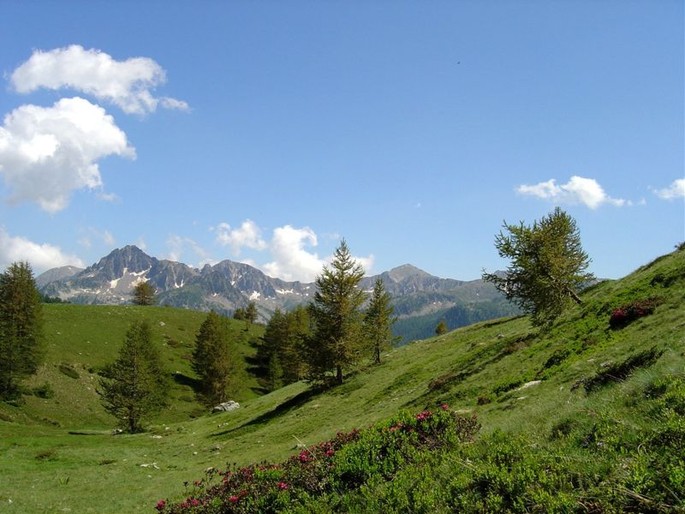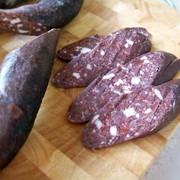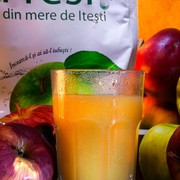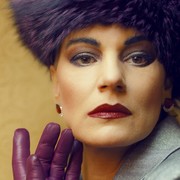The Parc national du Mercantour is one of the ten national parks of France. Since it was created in 1979, it has become popular, with 800,000 visitors every year enjoying the 600 km of marked footpaths and visiting its villages.
At the border with the Italian Piedmont, the Mercantour massif is the last promontory of the southern Alps before this chain dips sharply in the Mediterranean Sea: the top of Gelas, which, with its 3,143 m above sea level, is the highest in the Mercantour, is located only 50 km far from the sea!
The protected area covers some 685 km², consisting of a central uninhabited zone comprising seven valleys -
• Roya
• Bévéra
• Vésubie
• Tinée
• Cians
• Var
• Ubaye
• Verdon
and a peripheral zone comprising 28 villages. Many of them are perched villages,such as Belvédère at the entrance to the spectacular Gordolasque valley, concealing great architectural riches (numerous churches decorated with murals and altar pieces by primitive Niçois painters). More than 150 rural sites are located within the Park.
Around Mont Bégo there are petroglyphes pecked out on schist and granite faces. They have been dated from the late Neolithic and Bronze Ages. (See our former article).
In addition to the holm oak, the Mediterranean olive tree, rhododendrons, firs, spruces, Swiss pines and above all larches, the Mercantour is also endowed with more than 2,000 species of flowering plants, 200 of which are very rare: edelweiss and martagon lily are the best known, but there is also saxifrage with multiple flowers, houseleek, moss campion and gentian offering a multi-coloured palette in the spring.
Walkers may easily glimpse a chamois, several thousand of which live in the park and may often hear the whistling of marmots. The ermine is rarer (and more furtive), as is the ibex and the mouflon, although with a little luck you may be able to observe them during the coolest parts of the day in the summer. There is a tremendous variety of wildlife in the Mercantour: red deer and roe deer in the undergrowth, hares and wild boars, partridges, golden eagles and buzzards, numerous species of butterflies and even about 50 Italian wolves (which migrated there at the beginning of the 1990s). A Wolves Centre welcomes visitors in Saint-Martin-Vésubie.
Next week an article will describe the most beautiful sites !
Users with disabilities
Since some years the Parks Mercantour and Maritime Alps have launched a common policy with regard to users with disabilities. A final push in this direction came from accession to the joint European Charter for Sustainable Tourism and the application of its principles: among these, the improvement of the use of its territory in favor of disadvantaged groups, occupies a particularly significant role. The overall objective is to improve access to natural, cultural and landscape protected areas for people with special needs. All must be able to reach at least some of the natural sites and cultural viewpoints of the territory Maritime Mercantour and take advantage of the accommodation and tourist information centers. This trend concerns every type of disability (total or partial, motor, visual, auditory, mental) and aims at better integration of who has specific needs. The accommodation and promotion of hiking trails accessible to people with disabilities is a step towards greater "sharing of nature", as well as the provision of joëlette, special wheelchairs for mountain that allow those with walking difficulties to walk trails, dirt roads and trails.
https://www.youtube.com/watch?v=fySXqeyS6Bk
























